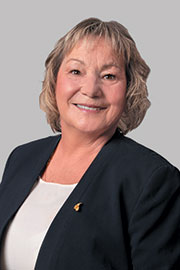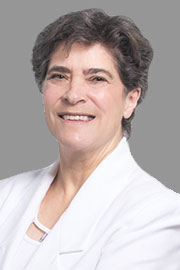- Sep/28/23 11:50:00 a.m.
My question is for the Premier.
Speaker, 6,000 ACTRA commercial workers have been locked out since April of last year. Before locking them out and hiring scab workers to do their jobs, the ad agencies demanded huge cuts to their wages and the elimination of their benefits and pensions.
At the one-year mark, I asked the Premier to stop using advertising agencies that use scab workers. Five months have passed, and the Conservative government continues to buy ads from wealthy union-busting agencies like FCB, Wink, and Leo Burnett. In fact, the MOT is about to record another non-ACTRA commercial. ACTRA Toronto has contacted the ministry several times about this—crickets.
Will the Premier halt this Ministry of Transportation commercial, and will he commit to stop using advertising agencies that use replacement scab workers in Ontario’s government-funded ads?
- Hear!
- Rabble!
- Hear!
- Rabble!
- Sep/28/23 1:10:00 p.m.
- Re: Bill 131
Since our government was first elected, we have demonstrated an unwavering commitment to building world-class public transit systems across the province. We are spending more than $70 billion over the next 10 years to build new subways, electrify our GO train fleet, improve service centres and give municipalities the support they need to deal with increasing ridership.
Speaker, our population is growing faster than ever before. The need to invest in public transit has never been greater. I have lived in Richmond Hill for over 30 years. We’ve been waiting and waiting year after year to get the subway up to Richmond Hill and finally, this government is bringing the subway to Richmond Hill. What a gratifying thing for the whole riding and all the people that will live there.
Our government has a bold vision to breathe new life into our transit infrastructure. Not only do we want to reduce the gridlock and greenhouse gas emissions, we want to get the people to move from their destination quickly and safely. This will improve the lives of Ontarians across the province.
Speaker, when we emerged from the pandemic, transit ridership rebounded to levels not seen in many years. Municipalities across the province were faced with a sudden spike in transit riders and the government of Ontario was there to make sure municipalities had the support they needed to deal with increasing demand. Through the provincial gas tax program, we provided $379.6 million to 107 municipalities. This funding helped ensure communities across Ontario could continue to deliver safe and reliable transit services. The funding was used to pay for public transit operating expenses, invest in new capital projects and to add to existing reserves. By working in collaboration and co-operation with our municipal partners, the government of Ontario helped make public transit more accessible no matter which part of the province you call home.
Our government is delivering the largest transit expansion of its kind in Canadian history, and we moved quickly to get this done. That is why we passed the Building Transit Faster Act in 2020. This legislation introduced a number of measures to accelerate the delivery of priority transit projects throughout Ontario: projects such as the Ontario Line, the Yonge North subway extension, the Scarborough subway extension, the Eglinton Crosstown West extension and the Hamilton LRT. We can’t get people moving when transit projects are held up by bureaucracy and red tape. The Building Transit Faster Act cuts through the red tape by streamlining project delivery and reducing administrative burden. We are minimizing the delays transit projects may encounter when they’re in close proximity to another development.
We are making it easier to remove physical barriers that impede new construction. We are enhancing coordination and engagement with members of the public and key stakeholders. This does not only get shovels in the ground more quickly; it ensures that everyone’s voice is heard as we build a better future for the province.
Speaker, our government is building the transit that the people of Ontario need and deserve, regardless of where they’re located. Our people in Richmond Hill are very excited that we call Richmond Hill home and we’re building the Yonge North subway extension. The Yonge North subway extension will extend Toronto’s Line 1 subway approximately eight kilometres north of the city, running from Finch station up through Richmond Hill. This is an exciting thing to relate to all of you now.
This cross-jurisdiction project spans the city of Toronto and York region and includes sections with the city of Markham, the city of Richmond Hill, and the city of Vaughan. The Yonge North subway extension will be a game-changer for commuters north of Toronto.
The extension will put 26,000 more people within a 10-minute walk of a subway station. It will accommodate 94,100 boardings each weekday. It will significantly reduce vehicle traffic during the morning rush hour, slashing green house gas emissions by 4,800 tonnes per year, and it will reduce time to travel to Toronto by as much as 22 minutes. That is so great for all of us who live in Richmond Hill.
By making transit more accessible to people north of Toronto, we’ll reduce traffic congestion and create thousands of jobs. During construction, the Yonge North subway extension will generate $3.6 billion in economic benefits.
Of course, when we don’t get stuck in traffic congestion, this is really coming and giving us all the time that we can to develop more business. Preliminary work on this vital piece of infrastructure began earlier this year at Finch station, which is currently being upgraded to accommodate additional subway service.
In April, we issued a request for qualifications for the advance tunnel contract. The Yonge North subway station will completely reinvent how people in Toronto and the surrounding area go about their daily lives. I will be one that gets impacted from this.
We will continue to collaborate with our municipal partners to ensure we deliver world-class public transit. This will reduce gridlock, shorten commutes and revitalize our economy. No matter where Ontarians live, access to reliable public transit is essential. That is why we’re investing in public transportation in every region of the province. The Ontario Community Transportation Grant Program is a great example of how we can make life easier for people living in areas that are currently unserved or underserved by public transit.
Many small and rural municipalities have access to public transportation, but the service levels typically aren’t as high as in the large urban cities. Because of that, public transit in this location isn’t a reasonable alternative to other modes of transportation such as personal vehicles. This disproportionately impacts vulnerable populations, including members of Indigenous communities, seniors and people with disabilities, people living on low income and racialized peoples.
But we’re working on this and fixing this. Through the Community Transportation Grant Program, we are providing up to $44 million over the next seven years to 43 local and intercommunity transportation projects in 38 municipalities that currently have limited options for public transit.
This program has provided reliable transportation to people seeking employment opportunities and social programs. This will help them to attend appointments, visit friends and family and maintain an independent and active lifestyle. This will also help them to be able to socialize in their communities. This is very important, especially to the senior communities. People who depend on public transit in their day-to-day lives will find that this is going to get a relief for them. We are applying the lessons learned from the program to inform the development of future initiatives to address transportation service gaps as we continue our mission to deliver a world-class public transportation network for the people of Ontario.
Speaker, in addition to the historic investments and giving communities the support they need, we are also making it easier to take transit by offering more ways to pay. For instance, we launched a new payment option for Presto customers in May. Riders can now tap their debit card—including cards stored on a smart phone or a smart watch—to board GO Transit and UP Express, Brampton Transit, Burlington Transit, Hamilton Street Railway, MiWay, Oakville Transit and York Region Transit. Wow, this upgrade marks a major milestone for anyone who uses Presto cards.
I had the honour to be with Minister Cho before, and also Minister Mulroney, when we introduced this. We are all excited about this change. It is now so much easier for commuters across the GTA to get to work, home or to school. It is so much easier for them to choose transit instead of taking the car. This means we’re taking vehicles off the road, reducing gridlock and giving Ontarians more time with their families.
And in Toronto, it’s never been easier to ride the TTC. In August, we introduced credit and debit card payments for anyone who boards a subway, streetcar or bus in Toronto. Riders no longer have to worry about topping up a Presto card when they are trying to catch the bus at the end of a long shift or even if they have to scramble to work in the morning or get out to visit family on a long weekend; all these are made a lot easier.
Speaker, all the progress we’ve made to date wouldn’t have been possible without working in co-operation with our municipal partners and transit agencies. This spirit of collaboration has made it so much easier to get the hard work done. Actually, this act that we are presenting is just that: We’re working very closely with our municipal partners.
Infrastructure is the backbone of our province. It shapes our daily lives, impacts our economic prosperity and influences our economic and transportation—it’s the most important thing: infrastructure that will help our future and will support building a stronger Ontario.
I want to reiterate a lot of the points that my colleagues have already mentioned before, that this act is going to be building more GO Transit stations. This will help people to be able to take the GO train, and we will be able to have more transit stations partnering with municipalities. It will definitely accelerate the transit expansion. Working with them, having the transit-oriented communities as we build more houses around the transit-oriented communities around the subway stations, is going to help all of us not only to resolve the housing crisis but build the economy. It will integrate the city of Toronto with the regional transit networks. What a great way for me, who comes from York region, to be connected with regional transit anywhere, not just only to Toronto. It will make our life and travelling a lot easier.
More importantly, this in itself helps the economy. As I was serving on the chamber and the board of trade, the number one key issue that all the members want is transportation. We really need this to be done properly. That was back at least 10 years ago, and after 10 years—in fact, after five years—nothing got done. They heard what we asked for, but nothing got done. But this government started it and worked on it, one thing at a time, regularly, and now, we’re going to have the Yonge North subway extension up to Richmond Hill. This is going to help the businesses as they go from places to places.
When I was running my own business, I used to serve a lot of clients right in the city of Toronto. But if I go to the city of Toronto, I can only visit one client and will waste my whole day, so I have to quit a lot of clients and move everything up to Richmond Hill. This is not helping economic development, so I’m sure with this change and with all these efforts that we’re making on transportation, this will help resolve this and will build the economy.
It’s not only the economy; it will help jobs. With all this work that we are working on the transit system, we’re also creating a lot of jobs. And of course, I’ve already mentioned how it will sustain the environment, and the collaboration and the innovative way we’re working with municipalities makes this act, makes this bill a lot different, because I believe that it is not just the province working; it includes everybody. Municipalities—we will be there to support them. They asked for it. We’ll work together with them. So I’m so happy that this act is being introduced. I’m here to support this building better transit systems for the future act.
- Hear!
- Rabble!
- Sep/28/23 1:20:00 p.m.
- Re: Bill 131
I am now going to invite questions to the member for Richmond Hill with respect to her remarks.
- Hear!
- Rabble!
- Sep/28/23 1:20:00 p.m.
- Re: Bill 131
I’d like to thank the member from Richmond Hill for her comments. Yesterday, I asked the Minister of Infrastructure about the broken promise that the Conservative government made prior to the 2022 election about the additional $160 million to improve the GO Transit service to London and area at the heart of southwestern Ontario, and I just wanted to reiterate for the member that that broken promise lets down so many rural communities in southwestern Ontario who need a regional transit model, not just the GTA.
I speak with many great farmers in the London area who can’t get workers into the good-paying jobs that are there waiting for them. Some businesses have even resorted to hiring their own bus to get people to work. Areas like Sarnia–Lambton, areas like Perth and many more can’t get the people there and they have to do it on their own because the government has let down rural Ontario.
My question: When will this government stop neglecting rural Ontario and invest in regional transit that meets the needs of southwestern Ontario and meets the needs of Ontario’s wonderful farmers and agri-foods industry?
- Hear!
- Rabble!
- Sep/28/23 1:20:00 p.m.
- Re: Bill 131
Thank you to the member from London North Centre. Thank you for that question. It is exactly because of that that we have this Transportation for the Future Act. We know that we are going to work together with municipalities, we’re working together with the regional transit system, and this is what this act is about. We are building on this and working towards that.
That’s why we ask for your support to get this bill passed, so that what you’re asking for is going to be fulfilled. This is exactly why this bill is being introduced.
- Hear!
- Rabble!
- Sep/28/23 1:30:00 p.m.
- Re: Bill 131
Thank you, member from Brampton West. Yes, this is part of the expansion we’re working towards. That’s why we’re working with the municipalities to build this special transit system to the Golden Horseshoe area. This is why we’re introducing this bill, in order to move things faster so that we can get the economy and get the project that we have planned for in the Golden Horseshoe area to come to reality. Thank you for your question.
That’s why we are doing this Transportation for the Future Act. That’s why we’re working with municipalities. They can come to us and work together with us with this collaboration. You will soon see; the same thing happening to me will be happening to you as well, and I’m looking forward for you to tell me the joy and excitement that you have shared, like what I’m sharing now.
That’s why I ask you to support this act. Let’s work together to build a better transit system across the province.
That is why we have this special—the transit-oriented communities—we are helping them to have the station contribution fee. We are working with them so that they can build the transit system that they need in their municipalities. We believe the municipalities themselves know what their needs are, and we will work closely with them.
If you have any good suggestions, please ask your municipalities to come up with a good plan so that we can work with them on what we call the SCF, the station contribution fee, so that we can work with them to have more homes built around the community and fulfill their needs as well.
That is why, in Richmond Hill, I understand there will be a lot more transit-oriented communities built around that area. I cannot wait to see the economy that it will bring to Richmond Hill.
- Hear!
- Rabble!
- Sep/28/23 1:30:00 p.m.
- Re: Bill 131
Speaker, through you to the member for Richmond Hill: For over a decade as a city councillor, now as St. Catharines’s MPP, I’ve been advocating for GO train service with the city and Team Niagara. While it’s a positive step that we recently secured a few additional trips, the hard-working commuters of St. Catharines are still awaiting all-day GO service from Niagara to Toronto. Why does this legislation prioritize new transit stations instead of ensuring and funding continuous services that already exist, like those in Niagara? When will we see all-day GO from Niagara to Toronto?
- Hear!
- Rabble!
- Sep/28/23 1:30:00 p.m.
- Re: Bill 131
Lanark–Frontenac–Kingston.
Thanks for the presentation, to the member from Richmond Hill. A follow-up to the question from the member from London North Centre: Could you describe for us the communities or type of communities that will benefit most from this bill?
- Hear!
- Rabble!
- Sep/28/23 1:30:00 p.m.
- Re: Bill 131
I want to thank the member for Richmond Hill for her comments. Would she agree that the times that we’re in, with the housing crisis that we have, have precipitated the urgency and the need for us to move forward with this legislation? Because the boundaries are seamless to a person who’s looking for a home. They need to find a home where they can, and they have to have access to transit that’s seamless, municipality to municipality. I wonder if the member could comment on that.
- Hear!
- Rabble!
- Sep/28/23 1:30:00 p.m.
- Re: Bill 131
There are provisions in the bill that suggest that the province is not planning on funding the building of all GO stations. Rather, they’re looking for already-strapped municipalities to come up with the money.
My question is, would there not be more than enough provincial dollars available to build GO stations without pressuring municipalities if the government reined in the gravy train currently being ridden by the 59 VPs of Metrolinx?
- Hear!
- Rabble!
- Sep/28/23 1:30:00 p.m.
- Re: Bill 131
Thank you to the member from Richmond Hill. Our government is taking action, Madam Speaker, to build Ontario by introducing this Transportation for the Future Act, 2023, which, if passed, would help build more GO Transit stations, support housing around transit and make it more affordable and convenient to travel across the greater Golden Horseshoe, helping families save money while increasing ridership.
My question to the member from Richmond Hill is, can the member explain to the House how the station contribution fee will accelerate transit expansion across the greater Golden Horseshoe?
- Hear!
- Rabble!
- Hear!
- Rabble!
- Sep/28/23 1:30:00 p.m.
- Re: Bill 131
As the disability critic for the official opposition, I am honoured to rise to debate Bill 131. Transit is very important to me. I moved to Hamilton at 18 years old for school about 11 years ago. To be honest, Hamilton was the first city I felt I could freely travel around without the risk of getting stuck or being harmed. The subway systems in Toronto at the time were, and are still, difficult to navigate if you’re someone with an assistive device. Wheel-Trans had at that time, and continues to have, consistent backlogs. These reflections, Madam Speaker, are from my experiences in Toronto over a decade ago, and not much has changed with regard to barriers facing disabled people across the GTA.
I remember being stuck in a TTC subway station as a teenager because an elevator was not working. I actually got off the subway, tried to get up out of the station, and I couldn’t go backward because there wasn’t a line that went the opposite way. So a security guard had to actually help me up the stairs—
- Hear!
- Rabble!
- Sep/28/23 1:40:00 p.m.
- Re: Bill 131
Just stop the clock for one moment, please.
Can you go ahead and help the member from Hamilton Centre so that she can read properly?
Interjection.
Is that okay? Can you see?
You can start the clock again, thank you.
- Hear!
- Rabble!
- Sep/28/23 1:40:00 p.m.
- Re: Bill 131
Thank you to the member from Hamilton Centre. Accessibility, of course, is very important to this government and, as you know, all new stations will have to meet the high accessibility standards that are currently in place. I’m wondering if the member could tell us if she feels that having more GO stations in closer proximity to where people live will assist with accessibility.
- Hear!
- Rabble!
- Sep/28/23 1:40:00 p.m.
- Re: Bill 131
I couldn’t get up out of the station because the elevator was broken, so a security guard actually had to lift my, at that time, 299-pound wheelchair up dozens of stairs and I had to slowly climb my way out of the station. To be honest, I’m still kind of nervous around taking the subway because it’s not accessible and it’s not as accessible as it should be.
The great thing about Hamilton’s HSR system is that it’s currently free for people with disabilities who use assistive devices, and every bus is fully accessible. And it’s because of this functioning system that I was able to travel around Hamilton for work and school and to actually live fully and independently—
As a former founding member of the Hamilton Transit Riders’ Union, and as someone who still commutes using our public transit system and GO Transit system to get to work as an MPP, I really value fully functioning transit systems and see this as a disability justice issue. Functioning transit systems for many disabled people across Ontario are liberatory, and that’s why we support efforts to broaden access to public transit and to improve service levels and the quality of public transit.
This is what the city of Toronto just accomplished under the leadership of Mayor Olivia Chow. The city of Toronto cancelled proposed cuts to TTC services, utilizing operating funds that were intended to operate the delayed Eglinton Crosstown project, and this will ensure TTC riders can count on prompt service.
As my colleague in Ottawa Centre highlighted in debate just yesterday, there are aspects to Bill 131 that do need work and this is what I intend to talk about today. Firstly, schedule 2 implies the existence of a new Transit-Oriented Communities Program, of which the details remain unknown. The original idea was for Metrolinx to negotiate deals in which developers would fund a new GO station in exchange for development rights. Now the government evidently expects municipalities to assume funding responsibilities. We don’t really have any idea based on what’s written here what sort of funding agreement the government has in mind, or how risks will be allocated. Municipalities may be required to assume risks related to cost overruns without having any control over procurement or delivery.
I believe transit ought to be publicly owned, operated and maintained. Adding developers into the mix and offloading responsibilities onto municipalities could make it harder to keep jobs local and to contribute back to our communities. My faith in these P3 deals, in Metrolinx and in the government as it relates to these transit projects has really been shaken. Hamiltonians have been waiting years for a hypothetical LRT project that has displaced many people from their homes along the LRT route, with no real, tangible plans in place to give back to the community for these losses. And I was someone who was very pro-LRT when this project was first proposed in Hamilton.
I met with Metrolinx in late August to ask about a constituent who had recently been evicted from his apartment unit along the proposed LRT route due to the build, and I was told by Metrolinx that he would be compensated for his loss, but there was no real plan or tangible outcomes in place. Meanwhile, we know that there are a handful of Metrolinx properties that are no longer on the proposed LRT route in Hamilton that could be put toward housing people right this minute.
Madam Speaker, I have also met with people living in encampments in Hamilton, living in tents, who did live along the proposed LRT route who now have nowhere else to go. Often, they were on fixed incomes such as ODSP and could not find new places to live on the current rates. This government and Metrolinx need to move with more care as they continuously tend to push through transit projects because I do not want to see more people displaced for a transit line that is epically failing, like the Eglinton Crosstown. People deserve more well-thought-out planning, and that includes people in Hamilton Centre.
Secondly, the government has also said, without much detail, that municipalities can only levy a station contribution fee on developers building housing projects and amenities at GO stations provided an incentive of some kind is offered. Given recent instances when this government has engaged the private sector in controversial or questionable infrastructure projects, this is concerning. They cannot keep offloading the responsibilities of what should be a public good or service onto developers. A transit station charge offers a more focused revenue tool in which developments most likely to benefit from a new station are responsible for more of the costs, as opposed to a development charge that applies to all developments across a municipality, including those that would not benefit much from the station.
Thirdly, I echo our transit critic’s ask that schedule 1 of Bill 131 must be repealed, as it is unnecessary. The Amalgamated Transit Union Local 113’s collective agreement already allows for transit service integration, provided reciprocity of service is assured with other transit agencies. An interest arbitration award confirmed this union rate. If the government opens up the TTC’s collective agreements from this House, transit workers will push back. And as the member from Ottawa Centre said yesterday, they are proud of their collective agreements and have worked for decades to ensure the quality of TTC service and well-being of TTC workers. An unconstitutional intrusion into their workplace will not be well received.
In Hamilton, the Keep Transit Public coalition, alongside ATU Local 107, are fighting for their right to maintain and operate Hamilton’s future LRT system, which could bring dozens of jobs to Hamilton. The Hamilton Community Benefits Network have also struggled to get real agreements from Metrolinx and the province on the ways the LRT system can cause the least amount of harm to workers locally. I echo the calls of the Keep Transit Public campaign to allow Hamilton’s LRT to be publicly maintained and operated.
There are serious concerns about this bill, including the potential interference with collective bargaining as well as a potential plan to download financial responsibility for provincial infrastructure onto municipalities. In the midst of issues with the Eglinton Crosstown and the Hamilton LRT, and in light of the ability for Metrolinx to commit to finishing projects that they start, we ought to move cautiously and ensure that this government does not continue to set itself up to fail in the realm of transit by clearly biting off more than it can handle. Like TTCriders, for reasons of accessibility, I also do support fare and service integration that would allow riders to travel seamlessly across transit agency boundaries without paying multiple fares or waiting for the right kinds of bus, but there has to be a fair agreement between the TTC and the union.
There is also a lot of other work that this government is neglecting around meeting its accessible transit deadlines for 2025. Creating accessible transit doesn’t always mean coming up with quick, new projects. We need to commit to making sure the transit systems that we currently have available are actually accessible, and I’ve received several calls specifically from people with visual impairments who find the current GO train system very difficult to navigate. I have also had many calls and have experienced myself how unreliable the West Harbour GO train times have been and continue to be.
I would urge this government to consult with disabled community members about what is and isn’t working and commit to creating an accessible Ontario by 2025, as promised, rather than continuing to start and fail multiple times at creating new transit systems and projects. We need to focus on a transit system that gives back to communities and stops these failed public-private partnerships.
Interjections.
- Hear!
- Rabble!
- Sep/28/23 1:50:00 p.m.
- Re: Bill 131
Again, we greatly appreciate the comments today from the member from Hamilton Centre. I do appreciate the member’s comments, especially the personal touch with regard to the member’s own use of the transit systems to get to this facility to do this amazing job.
I’m wondering if the member can speak to the idea that the people, especially the people who have accessibility challenges, in Bowmanville, in Durham region, across the larger region, shouldn’t have the similar advantages and the access to transit systems that the people in Hamilton have to be able to get to this centre.
- Hear!
- Rabble!
- Sep/28/23 1:50:00 p.m.
- Re: Bill 131
I’d like to thank my colleague the member for Hamilton Centre for her powerful and insightful remarks based on sharing her personal experiences as someone who uses a wheelchair and tries to use transit, which often fails her.
My question is around the government’s Transit-Oriented Communities Program, which has been very, very short on details. There is certainly a cloak of secrecy that surrounds that program. In light of that, does the member feel confident in the government’s ability to ensure a transit system that actually meets the needs of all Ontarians, including Ontarians with disabilities?
- Hear!
- Rabble!
- Sep/28/23 1:50:00 p.m.
- Re: Bill 131
It depends on if the station itself is accessible. There are also issues in the station that have created difficulties for people to navigate, including how things are labelled and just people’s ability to get around in the actual station.
So, yes, in some ways, having more stations could help with accessibility, but unless this government actually commits to building an accessible Ontario by 2025 and meeting its real targets, more of the same problem isn’t going to fix the underlying accessibility issues.
We really do need to fix the subway system, because it’s not clear where to enter for people in wheelchairs or walkers, or who struggle to get around, and when construction is added into that, it’s just really unsafe.
And then continuously saying these solutions are going to help people who are struggling with housing, when I’m seeing the opposite—these failed transit projects, over and over again, whether it’s the Eglinton Crosstown or the Hamilton LRT, are actually making people’s housing issues worse, in my opinion.
I think we need to go back to the table and think about how we’re going to make our current transit systems accessible, rather than continuing to introduce shiny new projects that often continue to fail.
I just don’t see a way forward that shows me that this government is prioritizing disabled people when we do talk about transit.
- Hear!
- Rabble!














